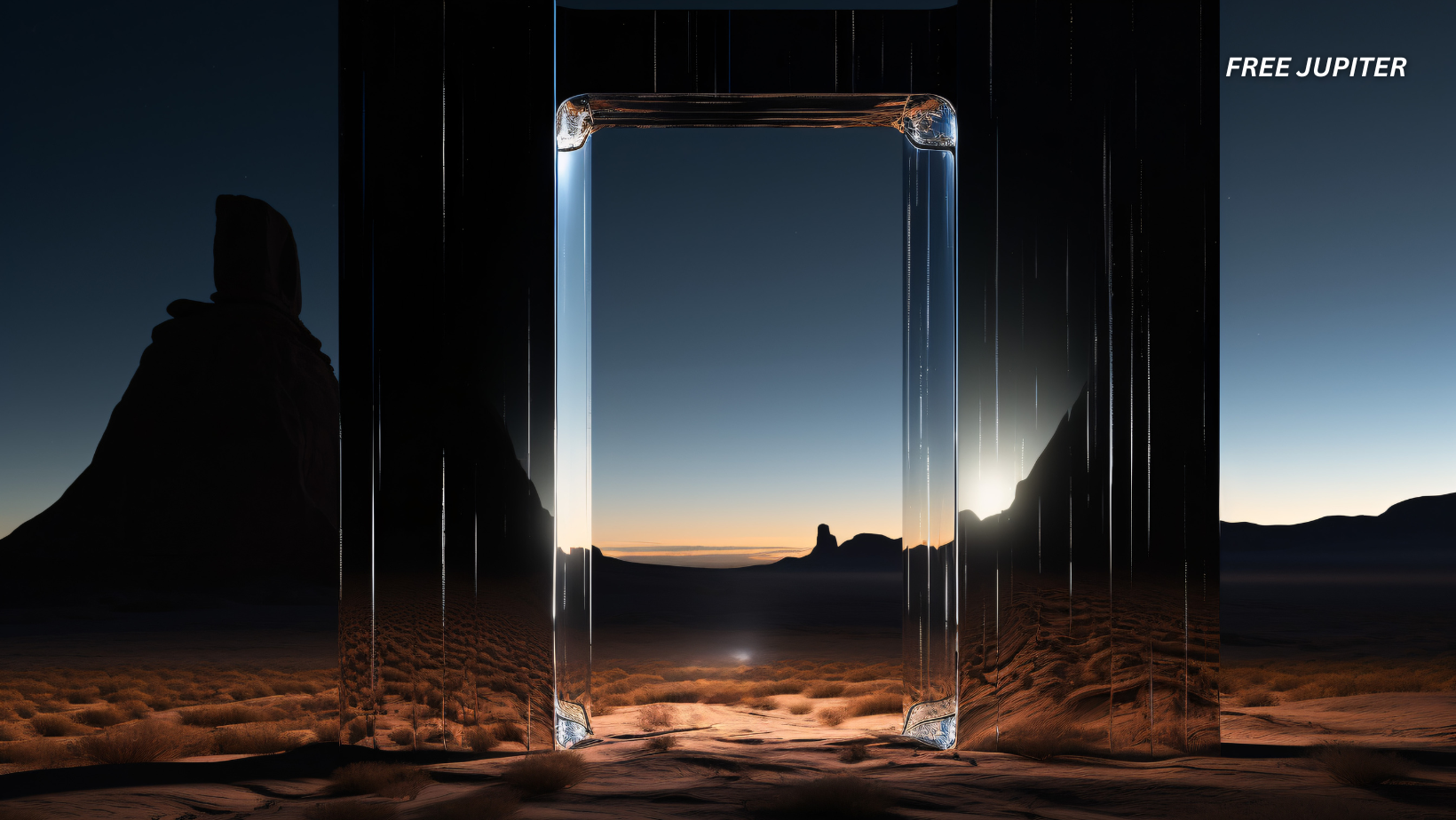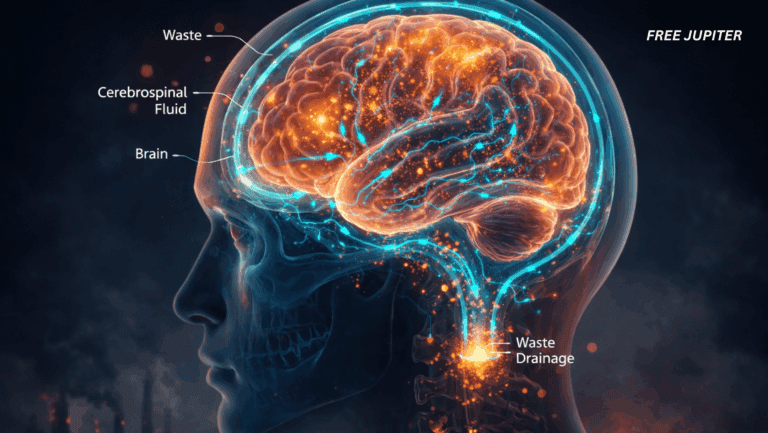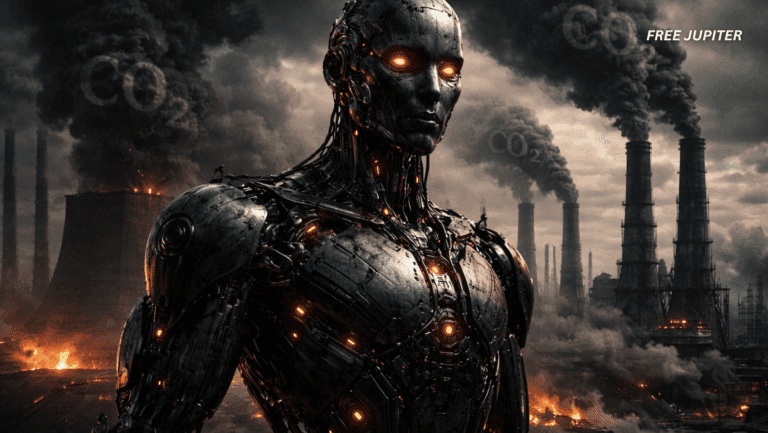Friendly Note: FreeJupiter.com shares general info for curious minds 🌟 Please fact-check all claims—and always check health matters with a professional 💙
For nearly a century, astronomers have been chasing an invisible ghost: dark matter.
It’s everywhere… and yet nowhere. It refuses to shine, reflect, or even block light. We can’t hold it, we can’t see it, and our most advanced detectors haven’t managed to catch it in action. But here’s the kicker: the universe as we know it simply wouldn’t work without it.
The Invisible Scaffolding of the Universe
Imagine building a skyscraper but leaving out the steel frame. That’s what the visible universe would be like without dark matter—utterly unstable. Galaxies rotate, and without extra mass holding them together, they’d spin apart like clothes flinging off in a malfunctioning dryer.
Observations of galaxy clusters, cosmic background radiation, and gravitational lensing (where light bends around invisible mass) all point to the same strange truth: about 85% of the matter in the universe is dark matter. The stuff we actually see—stars, planets, you, me—is just a thin frosting on a massive cosmic cake we can’t see.
For decades, scientists have been building elaborate traps to catch this cosmic phantom, from detectors buried deep underground to high-energy experiments at CERN. So far? Nothing.
Which is why physicist Stefano Profumo from the University of California, Santa Cruz, is suggesting something radical: maybe we’ve been searching in the wrong place entirely.
Read more: A Real-Life Pandora? Scientists Spot Possible Alien World Near Alpha Centauri A
A Mirror Universe in the Shadows
Profumo’s first idea sounds like it belongs in a sci-fi novel—except it’s rooted in real physics. What if dark matter lives in a mirror universe, a hidden realm that overlaps with our own?
“The nature of dark matter remains one of the most pressing mysteries in modern cosmology and particle physics,” Profumo said in a study recently published in Physical Review D. “While numerous candidates have been proposed, from weakly interacting massive particles to axions, the search for the fundamental nature of the dark matter and of the ‘dark sector’ it resides in continues.”
Think of it like this: you’re standing in front of a mirror. Your reflection moves when you do, but you can’t actually reach through and touch it. Now imagine that the “reflection” isn’t just an image, but a fully functional reality with its own particles, forces, and even its own history—only it’s invisible to us.
In this “dark mirror” realm, there could be:
- Dark quarks — tiny building blocks like our quarks, but belonging to the hidden world.
- Dark gluons — the “glue” that binds dark quarks together into dark protons and neutrons.
- Dark baryons — mirror versions of the protons and neutrons that make up normal matter.
These dark baryons could clump together to form dark stars or collapse entirely into dark black holes.
Here’s where it gets interesting: while we can’t see these black holes directly, if two of them collided, they could create gravitational waves—ripples in spacetime—that might bleed into our universe. Instruments like LIGO could, in theory, detect those ripples, giving us an indirect glimpse into the hidden world.
Why We’re So Desperate to Explain Dark Matter
The hunt for dark matter isn’t just a science hobby—it’s a quest to explain why the universe looks the way it does.
Over the years, scientists have proposed many possibilities for what it might be:
- WIMPs (Weakly Interacting Massive Particles) — hypothetical heavy particles that barely interact with normal matter.
- Axions — ghostly, lightweight particles that might behave more like waves than solid matter.
- Sterile neutrinos — elusive relatives of neutrinos that barely interact with anything.
The problem? No matter how clever the experiment, none of these candidates have been found. This is why Profumo’s suggestion is so intriguing—it doesn’t just give us a different kind of particle, it gives us a different kind of reality.
Building Physics in the Shadows
Profumo’s mirror universe is inspired by quantum chromodynamics (QCD), the theory that describes how quarks and gluons make up the protons and neutrons in our universe.
If the hidden universe has its own “dark QCD,” then it could have its own dark version of chemistry and astrophysics—complete with the formation of massive objects. These dark black holes might have formed in the early universe, not from collapsing stars like ours, but from dense clouds of dark baryons.
And if enough of these objects exist, they could make up all of the dark matter that’s shaping our cosmos.
Read more: After Half a Century, Scientists Finally Catch The Elusive ‘Ghost Particles’
A Second Theory: Born at the Edge of the Universe
If the mirror universe idea sounds too wild, Profumo has another: maybe dark matter formed at the cosmic horizon—the edge of the observable universe—right after the Big Bang.
In the first fractions of a second after the universe’s birth, there was a phase called inflation, where space itself expanded faster than the speed of light. The cosmic horizon acted a bit like the “event horizon” of a black hole—the boundary beyond which nothing can escape.
Profumo suggests that dark matter particles could have been created at this horizon and radiated into the universe in a process similar to Hawking radiation. This wouldn’t just be a one-time event. Because the universe is still expanding, this trickle of dark matter could still be happening today.
Why This Is Still an Open Question
Both ideas—mirror universe dark matter and cosmic horizon radiation—are speculative. We don’t have direct evidence for either. But they’re not impossible, and that’s enough to keep physicists interested.
As Profumo puts it: “The underlying mechanism leading to the production of cosmological dark matter is at present an open question and a matter of ongoing, intense scrutiny.”
Translation: we’re still in the cosmic dark, but we’re feeling around for the light switch.
Why It Matters to You (Even If You’re Not a Physicist)
Dark matter isn’t just a curiosity—it’s the foundation of cosmic architecture. Without it:
- Galaxies wouldn’t have formed the way they did.
- The universe might not have developed its current large-scale structure.
- The Milky Way might never have existed, which means Earth—and life—might never have existed.
If Profumo is right, we could be living in a layered reality—our universe entwined with another, each shaping the other in subtle, gravitational ways. It’s a humbling thought: what we call “reality” might only be half the story.
Read more: The Shocking Factor Holding AI Back From Replacing Humans
The Search Continues
Right now, physicists are watching the sky for the tiniest ripples in spacetime, running computer simulations of how dark matter might behave, and rethinking old assumptions.
Whether the answer lies in a parallel mirror world or at the farthest edges of spacetime, one thing is certain: when we finally discover what dark matter really is, it will fundamentally change our understanding of the cosmos—and maybe our place in it.
Until then, we’ll keep peering into the darkness, listening for whispers from the other side.










